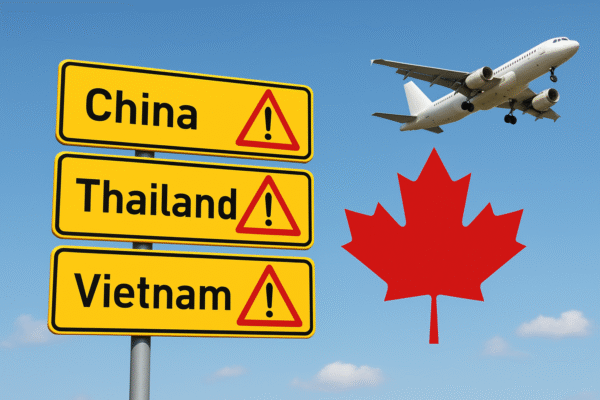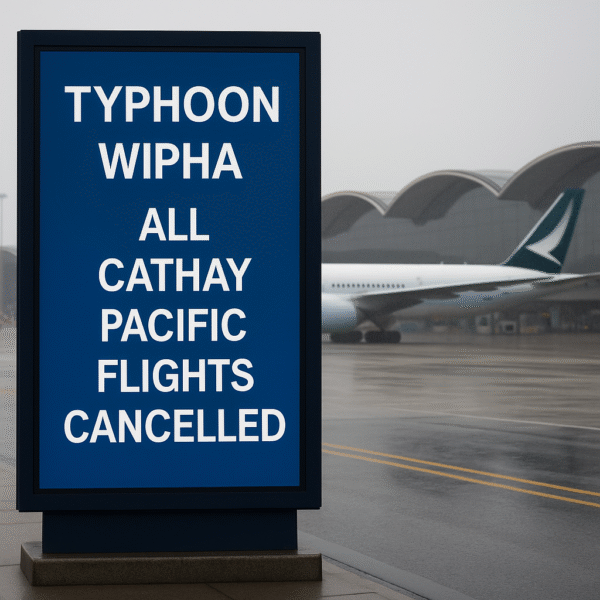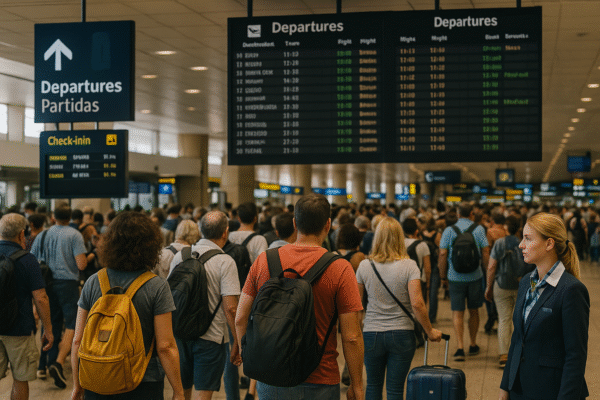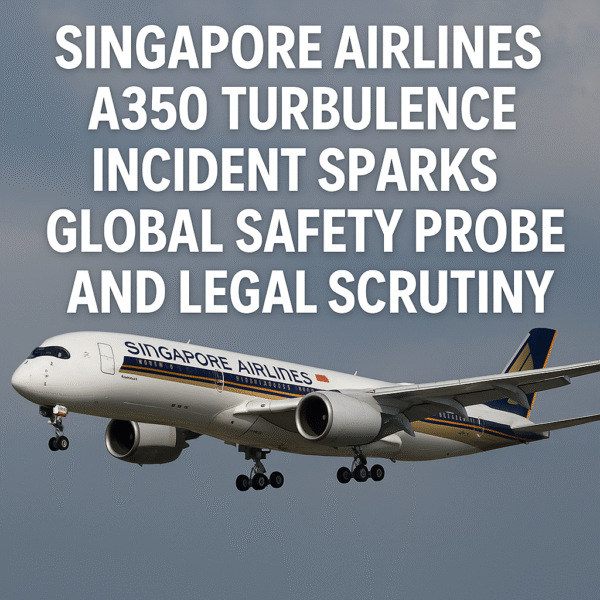SINGAPORE/SHANGHAI – July 2025 – Singapore Airlines is under renewed global scrutiny after one of its Airbus A350-900 aircraft encountered violent turbulence during descent into Shanghai Pudong International Airport on June 27, 2025, injuring at least one passenger. The incident has triggered a formal safety investigation by Singapore’s Air Accident Investigation Bureau (AAIB), raising international concerns about increasing turbulence-related threats in commercial aviation.
The aircraft, operating as flight SQ832 from Singapore Changi Airport to Shanghai, experienced severe mid-air shaking at approximately 27,000 feet, prompting immediate onboard medical response and a rapid safety evaluation. Despite the event, the flight landed safely, and emergency responders treated the injured upon arrival.
AAIB Launches Official Investigation into Inflight Disturbance
Singapore’s AAIB has confirmed the classification of the incident as an official aviation accident due to passenger injury and cabin disruption. Investigators will assess factors including weather conditions, turbulence forecasting data, pilot response, and cabin crew protocol compliance.
The Airbus A350-900 involved, tail number 9V-SMB, was delivered to Singapore Airlines in 2016 and is renowned for its state-of-the-art pressurization systems and long-haul performance capabilities. Despite its technological strengths, the aircraft’s encounter with clear-air turbulence—commonly undetectable by radar—has exposed vulnerabilities that affect even the most modern fleets.
A Pattern of Dangerous Turbulence in Asia-Pacific Skies
This isn’t the first such scare for Singapore Airlines. In May 2023, a Boeing 777 en route from London to Singapore was diverted to Bangkok after extreme turbulence over Myanmar left one person dead and multiple passengers injured. That incident involved a dramatic 54-meter altitude drop in less than five seconds, highlighting how severe and unpredictable atmospheric conditions are becoming, particularly over the Bay of Bengal and Southeast Asia.
Passengers from Australia and New Zealand were among the injured in the 2023 event, some of whom continue to suffer long-term psychological impacts. Legal proceedings in Australia and trauma treatment in New Zealand have kept the memory of that tragedy alive even as new incidents emerge.
Updated Airline Safety Protocols and Industry Reforms
Following the 2023 event, Singapore Airlines revamped its turbulence response policy. New rules now suspend all hot food and beverage services when seatbelt signs are illuminated. Flight attendants are instructed to remain seated during turbulent episodes, with announcements reinforced to passengers throughout the flight.
Industry analysts suggest these reforms may have helped mitigate injuries during the latest incident. “The proactive measures taken by the crew reflect the airline’s evolving safety culture, but the event underscores how much more needs to be done industry-wide,” said a former International Civil Aviation Organization (ICAO) advisor.
Legal Ramifications and Passenger Rights Under Montreal Convention
Under the Montreal Convention, airlines are liable for injury or death resulting from onboard incidents. Singapore Airlines confirmed in 2023 that affected passengers from the previous turbulence event received compensation ranging from US$10,000 to US$25,000 based on injury severity. However, legal challenges are ongoing as plaintiffs in Australia argue for broader compensation that includes emotional and psychological harm.
Passenger advocacy groups now call for updated definitions of injury under international aviation law, urging ICAO and IATA to include PTSD and psychological trauma as part of passenger rights frameworks.
Rising Turbulence in a Warming Atmosphere: A Global Concern
Meteorological studies, including findings from the UK Met Office and NOAA, suggest climate change is intensifying clear-air turbulence (CAT), especially in high-altitude jet streams over Asia-Pacific. Airlines are being urged to invest in advanced forecasting systems, such as LIDAR-based sensors, to detect CAT and improve pilot response times.
“Climate-linked turbulence is now a recognized hazard that’s becoming more frequent and harder to avoid,” said an ICAO climate risk specialist. “Aviation authorities must work faster to equip crews with better warning tools and safety training.”
A Multi-National Repercussion
From legal action in Australia to medical care in Shanghai and trauma recovery in New Zealand, the incident underscores how turbulence emergencies impact nations far beyond a flight’s point of origin. UK citizens, too, remain connected to the broader narrative, with the 2023 fatality involving a British passenger still fresh in the public memory.
Meanwhile, Myanmar’s turbulent airspace remains flagged as high-risk by multiple aviation safety monitors, further linking the latest incident to broader regional air safety concerns.
Conclusion: A Wake-Up Call for Global Aviation
The turbulence incident aboard Singapore Airlines flight SQ832 serves as a potent reminder that no airline or aircraft is immune to the escalating challenges posed by a volatile atmosphere. With a rising number of international flights traversing weather-unstable regions and an increasing number of global travelers taking to the skies post-COVID, aviation stakeholders are now confronting a clear imperative: update inflight safety procedures, improve turbulence forecasting technology, and address passenger welfare—physically, mentally, and legally.
As investigations continue, Singapore Airlines reaffirms its commitment to safety and transparency. The global aviation industry will undoubtedly watch closely, learning from the turbulence not just in the skies, but also in the legal and operational frameworks that follow.
For more travel news like this, keep reading Global Travel Wire




















